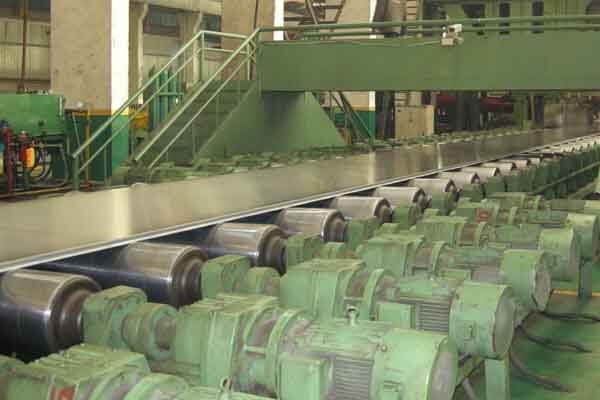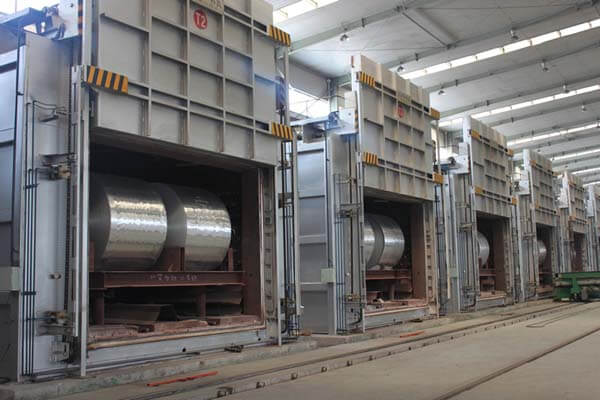The hot rolling temperature for aluminum alloys is typically higher than the annealing temperature. Hot rolling is a processing technique that involves plastic deformation of the metal at elevated temperatures to achieve the desired shape and properties. The hot rolling temperature is generally above the solidus temperature of the alloy, ensuring sufficient plasticity for deformation. For aluminum alloys, the hot rolling temperature usually falls within a higher temperature range, often exceeding 500 degrees Celsius, depending on the alloy’s composition and properties.

Aluminum plate/sheet hot rolling process production line
Annealing, on the other hand, is a heat treatment process after hot rolling (and sometimes cold working processes) that aims to improve the crystal structure and properties of the metal by heating it to a lower temperature and then cooling it slowly, thereby eliminating internal stress and increasing ductility. The annealing temperature is typically lower than the hot rolling temperature, generally below the solidus temperature of the alloy, and varies based on the specific alloy and desired performance.
Below is a simplified table summarizing the annealing temperatures for various aluminum alloy series. This table aims to provide a quick reference to the general annealing temperature ranges appropriate for different types of aluminum alloys. Remember, the exact temperature and process might vary based on the specific alloy composition and desired final properties.
| Aluminum Alloy Series | Description | Annealing Temperature Range |
| 1xxx Series | Pure Aluminum | 345°C to 415°C (650°F to 775°F) |
| 2xxx Series | Aluminum-Copper Alloys | 413°C to 483°C (775°F to 900°F) |
| 3xxx Series | Aluminum-Manganese Alloys | 345°C to 410°C (650°F to 770°F) |
| 4xxx Series | Aluminum-Silicon Alloys | Varies; refer to specific alloy |
| 5xxx Series | Aluminum-Magnesium Alloys | 345°C to 410°C (650°F to 770°F) |
| 6xxx Series | Aluminum-Magnesium-Silicon Alloys | 350°C to 410°C (660°F to 770°F) |
| 7xxx Series | Aluminum-Zinc Alloys | 343°C to 477°C (650°F to 890°F) |
| 8xxx Series | Aluminum alloys with other elements | Varies widely; often 345°C to 415°C (650°F to 775°F) for specific alloys like 8011 |
This table provides a broad overview. For precise annealing conditions, including soak times and cooling rates, consulting the material specifications or a metallurgical expert is recommended. The specific requirements can significantly impact the material’s mechanical properties and suitability for various applications.

Annealing of aluminum coils is a common heat treatment process
In summary, the hot rolling temperature is higher than the annealing temperature because hot rolling requires the metal to be sufficiently plastic for deformation at elevated temperatures, whereas annealing focuses on optimizing crystal structure and properties and is typically conducted at lower temperatures.
Copyright © Huasheng Aluminum 2023. All rights reserved.